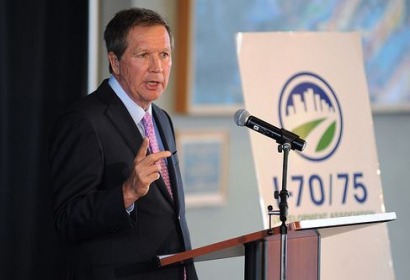
These laws require the use of renewable power sources by a state’s electricity provider and are huge incentives for power providers to pursue clean tech.
However, since the RPS laws have been added to the books, there have been thirty proposed bills in seventeen different states that aim to eliminate them. Now, when individual renewable projects are finally getting the chance to come to fruition, they are suddenly encountering legislative opposition that threatens their success.
This pattern of legislative behavior demonstrates to the renewables industry that public affairs is about more than preparing for a groundbreaking; if projects are to succeed they must be accompanied by multiphase campaigns that remain active into and beyond the completion stage to build and maintain public and legislative support.
Look no further than the state of Ohio as a demonstration of why organized grassroots support must be an ongoing process. A bill that signals the vulnerability of the state’s renewable industry is currently awaiting Ohio Governor John Kasich’s signature.
This bill, SB 310, freezes the state’s requirements for power providers to generate electricity from renewable resources for two years. This means that if the bill is passed, investment in the state’s renewable projects could cease. To date those investments are worth an estimated $1.2 billion. The writing on the wall is clear; the next logical step for clean energy opponents is to seek an overall disengagement from any sort of standard pertaining to renewable production requirements in Ohio.
This circumstance is a shame for the average Ohioan. With the clean standards facing defeat, the providers will lose incentive to utilize existing infrastructure and to proceed with planned further investment.
According to the American Wind Energy Association, there are another ten planned projects worth an estimated $2.5 billion that could rethink pursuing business in the state. Overall, with these standards passed, Ohio could be left out completely from the US renewables market, which by recent figures is valued to be worth around $36 billion.
To date, SB 310 has passed the state Senate and House of Representatives. Governor John Kasich’s signature is all SB 310 needs to become a law, and the governor has stated his intention to sign. From here, the future is uncertain for Ohio renewables. It did not have to be this way though; if supporters of renewable energy had been mobilized sooner they could have made sure their disapproval of SB 310 was heard.
In order for the renewables sector to succeed in the midst of legislative obstacles, it must prompt its legions of supporters to take action. If clean tech providers can start successful public affairs plans, the supportive voice can easily become the strongest voice. It is the duty of renewable power providers to accompany new projects with an outpouring of lasting public goodwill and support that will grab the attention of lawmakers.
A winning grassroots campaign begins by building a database of supporters that can be organized by demographics, party identification or legislative district in order to build support for pro-renewable energy legislation. To identify these supporters and advocacy leaders, a variety of strategies must be employed.
The first is a direct mail campaign to educate potential supporters, followed by telephone identification calls to identify broad support. Opening lines of communication with advocates in this way will help to refute myths, convince parties on the fence, and identify the methods through which supporters are willing to help with advocacy efforts. Direct mail can be interactive if a tear-off component, upon which supporters can fill out their contact information and offer to support the campaign, is returned and followed up on for further grassroots organization. The next step is the establishment of a social media endorsement network. This type of arrangement is pioneered and run by identified ardent proponents to show the grassroots nature of the pro-renewables side.
A strong social media presence provides an online platform for citizens to voice their personal narratives of support, and it can also serve as a crucial counterbalance to opposition encountered online. Social media is an instant and effective vehicle for a broad call to action.
As a vote on a piece of legislation approaches, one of the most important steps is to facilitate letter writing campaigns to elected officials and to motivate attendance by supporters at all public hearings. Without visible public support, opposition can make any number of unsubstantiated claims. This activity reminds politicians to act in accordance with the will of their constituents and is an essential precursor to effective legislative outcomes.
If a comprehensive grassroots strategy utilizing the aforementioned tactics had been pursued in Ohio earlier, renewables in the state would not be as vulnerable as they are currently. Moving forward, the pro-renewable legislative advocacy agenda should be to contact, inform, and energize the industry’s advocates.
Wherever a renewable project is planned, project managers should encourage advocates to contact their local officials and their state Senators and Representatives. This way, supporters can voice their support for renewable energy right to the officials who they voted into office. Without an effort to build support for any legislative agenda, it is unlikely that the supportive voice will ring above the others. Supporters will write, rally, and vote all according to their own volition if they have been informed, organized, and strategized beforehand.
Al Maiorino
President, Public Strategy Group
Al Maiorino started Public Strategy Group, Inc. in 1995. His firm has developed and managed multiple corporate public affairs campaigns in a variety of industries such as gaming, cable television, retail development, auto racing, energy and residential projects. Additionally, his firm has worked on projects in twenty states and three countries.

